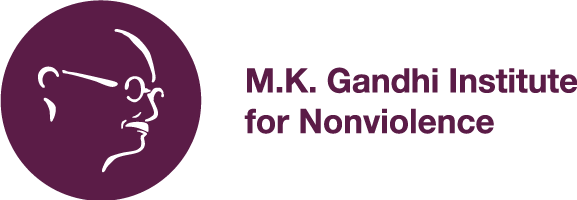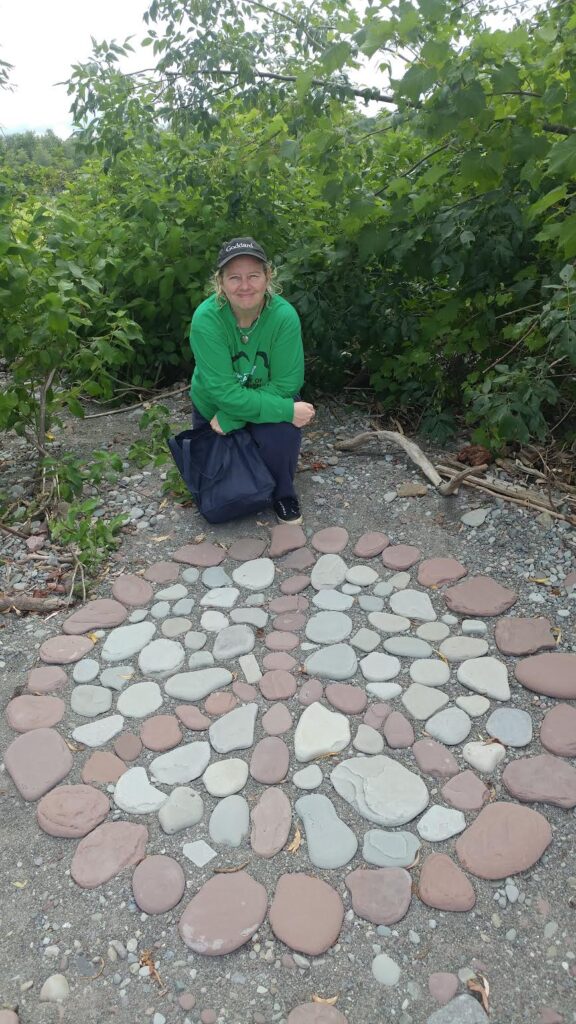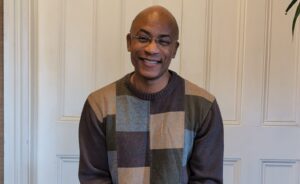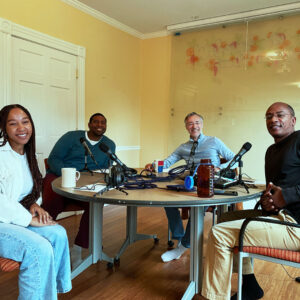“Nonviolence cannot be preached. It has to be practiced.”
-Gandhi, from “Nonviolence in Peace and War”
I’m reading Resmaa Menakem’s remarkable book, “My Grandmother’s Hands.” I’m reading the section about trauma, police, and harm to black bodies, and I am re-thinking through two incidents; one that happened a few years ago in front of the Gandhi Institute and one that happened about two weeks ago.
I hesitate to share stories like this, especially in writing, for a couple of reasons. One of which is that it’s hard for me to share stories about actions where I have tried to use my rank and privilege good without sounding like a white savior. What I am promoting here and attempting to enact instead is taking responsibility for my unearned racial privilege and using it, which means being vulnerable, courageous, willing to fail, and willing to break white silence. What I am also trying to describe is a couple of my efforts to practice nonviolence.
Several years ago, my colleagues and I were sitting in the front office looking out over South Plymouth Avenue when we noticed a police officer chasing a Black youth down the street, most likely from our neighboring elementary school. Just as we caught sight of them, the officer tackled the student. I quickly went to the front door of the Institute and down the steps outside.
By the time I reached the sidewalk a police vehicle had pulled up and another officer was putting the student in the backseat. The police officers stiffened as I approached, and I noticed the one breathing heavily, red-faced. I heard the student in the back seat of the police car (the door was open) saying “I can’t breathe” which could have easily resulted from being tackled onto the pavement by a fully-grown man.
I turned to the red-faced officer and asked if he was okay. He seemed surprised and said yes. I said “I’m glad. How about him? I’m worried that he is not okay.” I turned to his partner who looked less flustered. I asked him “What do you think should be done right now? Could we call an ambulance to make sure he is okay?” In the meantime, neighbors were starting to come out in the street using cell phones to record what was happening. I stood there with two white officers, using my white skin, and middle age and middle class affect for all it was worth – which I am aware disgracefully probably meant a lot, or at least something, to those two men. Additionally, my tone and presence were deliberately calm. If I had said those same words in a different tone, I’m pretty sure the outcome would have been less positive even with the advantage of white privilege.
They called an ambulance, and the youth seemed able to breathe okay. I went back inside and called the police chief who I knew to let them know about the incident. A special investigator came out shortly afterwards and interviewed all of us about what we had seen. We reached out to the building principal to let her know what had happened. We found out that this student had pulled the fire alarm and fled the building when he saw the police had come to question him about possible gang involvement in his family (I wonder, are police allowed to question students in school buildings?).
Reading Dr. Menakem’s book I now wonder if I had an instinctive response to the trauma of the white police officer even though my heart was with the student. Checking in with the white police officer felt like the most skillful thing to do given the power differences and danger to the student in the moment. It also seemed to surprise them, which helped. It makes me think of the saying, “people need to know that you care before they care what you know”.
Much more recently I used my identity and privilege again in front of the Institute. Running in for one of my few in-person meetings, I noticed a pickup truck just down the street with a large flagpole hoisting a large Confederate flag. It felt like an affront and a threat in the neighborhood.
Breathing deeply and muttering a quick prayer, I approached the driver of the truck who was talking to another white man. I was cautious as I knew that connecting in front of an audience could lead to more of a performative exchange than one of any real depth or meaning. I started by telling him I was curious about the flag and asked him if he would be willing to talk to me about it. He was surprised and said yes, his courtesy possibly prompted by mine.
I asked what the flag meant to him and he responded, “It’s an American flag”. I said I was surprised by that and that I had met people from the South who thought of it as a regional flag, so I asked if he was from the south. He responded “No, I’m from here.” I told him that my husband had ancestors who fought on both sides of the civil war, making it an area of interest in our family. He brightened and said, “Yes I’ve heard that that was true of many people”. I said that from what I understood, that flag stood for a time when our country was divided and deeply troubled, so I did not think if it was a flag that stood for the whole country. He responded by saying that he was an Army veteran who loved flags. He showed me a variety of flags that he had in the truck, including a tattered American flag. I mentioned that a number of people in the neighborhood where we were standing were also veterans. I was trying to be conscious while I was there to model respect, concern, and curiosity. I was aware that this was an opportunity to have the kind of exchange that former white supremacists like Arno Michaelis and Frank Meeink report were influential to help them question and rethink their beliefs.
The conversation was courteous. I thanked him for the time, and as I walked away, he took the flag down. I was relieved and have not seen that truck or the flag since. If I did, I believe I would feel comfortable to approach again and keep talking.
As I reflect on those experiences while reading My Grandmother’s Hands, I’m thinking about trauma in bodies, mine and others. Both of these events happened when I had little time to think or plan – and that is almost always how these moments occur. We read and learn and pray and practice nonviolence to be able to respond when these unscheduled opportunities present.




